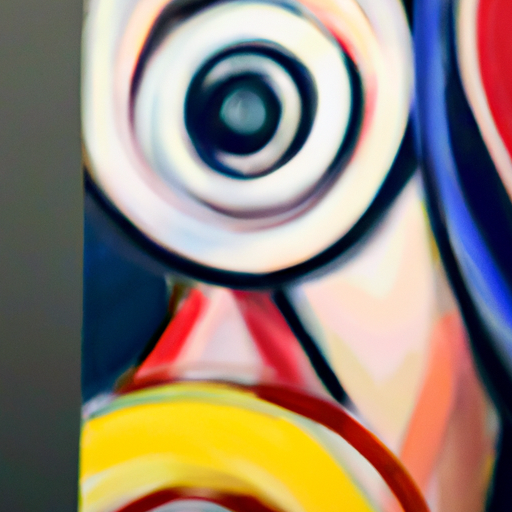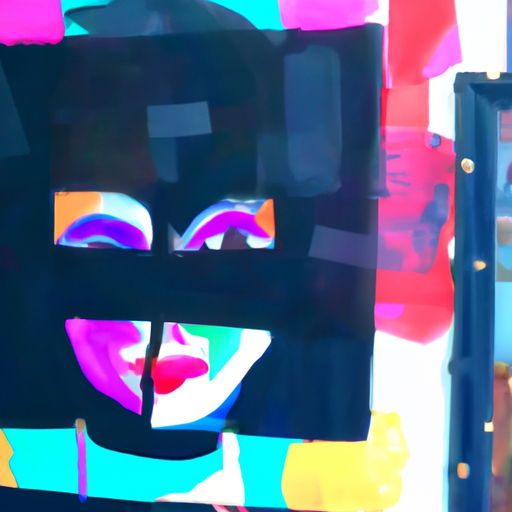
-
Table of Contents
- Folk Art and Its Influence on Contemporary Design
- Understanding Folk Art
- The Influence of Folk Art on Contemporary Design
- 1. Use of Bold Colors and Patterns
- 2. Emphasis on Handcrafted Techniques
- 3. Celebration of Cultural Identity
- Case Studies: Folk Art in Contemporary Design
- 1. Marimekko
- 2. Oaxaca Pottery
- 3. Scandinavian Design
- The Future of Folk Art in Contemporary Design
- Conclusion
Folk Art and Its Influence on Contemporary Design

Folk art has a rich history that spans across cultures and time periods. It is a form of artistic expression that is deeply rooted in tradition and often reflects the values, beliefs, and customs of a particular community or region. While folk art has traditionally been associated with rural or indigenous communities, its influence can be seen in contemporary design across various industries. In this article, we will explore the significance of folk art and how it has shaped and continues to shape contemporary design.
Understanding Folk Art
Folk art encompasses a wide range of artistic practices, including painting, sculpture, pottery, textiles, and more. It is often characterized by its simplicity, use of vibrant colors, and incorporation of everyday objects and materials. Unlike fine art, which is typically created by trained artists for aesthetic purposes, folk art is often created by individuals within a community for functional or decorative purposes.
One of the defining features of folk art is its connection to cultural heritage. It is deeply rooted in the traditions and customs of a particular community or region, and often reflects the social, religious, and historical context in which it was created. Folk art is passed down from generation to generation, preserving and celebrating the cultural identity of a community.
The Influence of Folk Art on Contemporary Design
Contemporary design draws inspiration from a wide range of sources, and folk art is no exception. The influence of folk art can be seen in various design disciplines, including fashion, interior design, graphic design, and product design. Here are some ways in which folk art has influenced contemporary design:
1. Use of Bold Colors and Patterns
Folk art is known for its vibrant colors and intricate patterns. These elements have found their way into contemporary design, adding a sense of energy and visual interest. Designers often incorporate bold colors and patterns inspired by folk art into their creations, whether it’s a piece of clothing, a wallpaper design, or a product packaging.
For example, fashion designer Stella Jean is known for her use of bold colors and patterns inspired by her Haitian and Italian heritage. Her designs often feature vibrant prints and intricate embroidery, reminiscent of traditional folk art.
2. Emphasis on Handcrafted Techniques
Folk art is often created using traditional handcrafted techniques, such as weaving, embroidery, and pottery. These techniques require skill, patience, and attention to detail. In contemporary design, there is a growing appreciation for handcrafted techniques and the unique qualities they bring to a product or design.
Many designers and brands are incorporating handcrafted elements into their designs, whether it’s handwoven textiles, hand-painted ceramics, or hand-stitched embroidery. This not only adds a sense of authenticity and craftsmanship to the design but also supports local artisans and preserves traditional techniques.
3. Celebration of Cultural Identity
Folk art is deeply rooted in cultural identity. It reflects the values, beliefs, and customs of a particular community or region. In contemporary design, there is a growing emphasis on celebrating cultural diversity and inclusivity.
Designers are incorporating elements of folk art from different cultures into their designs, creating a fusion of traditional and contemporary aesthetics. This not only adds visual interest but also promotes cross-cultural understanding and appreciation.
Case Studies: Folk Art in Contemporary Design
Let’s take a look at some case studies that highlight the influence of folk art on contemporary design:
1. Marimekko
Marimekko is a Finnish design company known for its bold and colorful prints. The company draws inspiration from Finnish folk art and nature, creating designs that are both timeless and contemporary. Marimekko’s iconic Unikko print, featuring large-scale poppy flowers, is a perfect example of how folk art can be reinterpreted in a modern context.
2. Oaxaca Pottery
Oaxaca, a region in Mexico, is known for its vibrant pottery traditions. Many contemporary designers have been inspired by Oaxacan pottery and have incorporated its bold colors and intricate patterns into their designs. One such example is the work of Mexican designer Carla Fernández, who collaborates with local artisans to create contemporary fashion collections that celebrate Mexican folk art.
3. Scandinavian Design
Scandinavian design has long been influenced by folk art traditions. The clean lines, simple forms, and use of natural materials in Scandinavian design can be traced back to the region’s folk art heritage. Designers like Alvar Aalto and Arne Jacobsen have incorporated elements of folk art into their furniture and product designs, creating pieces that are both functional and aesthetically pleasing.
The Future of Folk Art in Contemporary Design
Folk art continues to inspire and influence contemporary design, and its significance is likely to grow in the future. As designers and consumers become more conscious of the cultural and environmental impact of their choices, there is a growing interest in traditional craftsmanship and cultural heritage.
Designers are increasingly collaborating with artisans and communities to create sustainable and socially responsible designs that celebrate folk art traditions. This not only helps preserve traditional techniques and support local economies but also creates unique and meaningful products that resonate with consumers.
Conclusion
Folk art has a profound influence on contemporary design. Its vibrant colors, intricate patterns, and handcrafted techniques have found their way into various design disciplines, adding a sense of energy, authenticity, and cultural identity. By incorporating elements of folk art into their designs, designers celebrate cultural diversity, support local artisans, and create products that are both visually appealing and socially responsible. As we move forward, the influence of folk art on contemporary design is likely to continue growing, shaping the aesthetics and values of the design industry.
